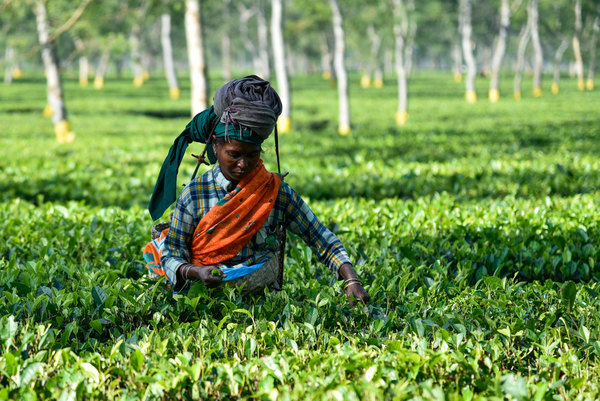Urban agriculture – why is it important?
Today is the second day of the Urban Agriculture Summit 2013 ’Transformative solutions on how we feed people in the urban era’ currently being held in Linköping, Sweden (29-31 January). So why this specific gathering on urban agriculture? A recent UN report estimated that the Earth’s population will increase by 40% and exceed 9 billion people…
A sweeter future for bee farmers
Whilst tuning into the BBC’s Great Comic Relief Bakeoff last week I was interested to hear about TREE AID and their honey project in Ghana. TREE AID supports villagers to produce and market honey so that they can generate income to provide their families. The villagers are encouraged to farm bees during the dry months…
Banned chemicals and silent springs
Recently I have been removing an array of chemicals, from alpha-hexachlorocyclohexane to zeta-cypermethrin, from CABI’s compendia (Crop Protection Compendium, Forestry Compendium and Invasive Species Compendium) records, as these chemicals have either been banned or severely restricted in their use. This work was sponsored by Plant Protection Station, Ministry of Agriculture, Forestry and Fisheries, Japan.
The seed of its own destruction? Seedborne diseases and the seed trade
In 1989, farmers in Florida, Indiana and South Carolina began noticing a disease that was rapidly spreading through their watermelon crops1. Large, dark lesions and bruises appeared on the fruit and leaves exhibited brown discolouration; all that remained of severely infected fruit was a pulpy, inedible mess. In damp conditions the disease proliferated quickly and…
Recycling for Zero Waste
I believe that waste prevention, reduction, re-use and recycling are key measures to achieve sustainability in a world which is becoming depleted of natural resources. These measures will also reduce the environmental impact of pollution, by reducing carbon emissions and might even benefit economic growth. For this reason, I attended a seminar on waste recycling…
Horse in burgers and the long tradition of adulterating food.
We don’t know yet how the horse DNA recently found in cheap burgers supplied by several supermarkets in the UK got there, whether by accident or deliberately but debasing or adulterating food by using something cheaper to bulk it out it is an ancient tradition. The incentive is great. A trader or producer who does…
Filling the yield gap – the answer’s in agroforestry
In his recent blog Three steps to bridging the yield gap, CABI author Prof. Roger Leakey, explains how agroforestry can help to sustainably increase the productivity of crops. In brief, these are as follows: Step 1 – Adopt agroforestry practices such as improved fallows and relay cropping to enhance crop yields. Step 2 – Diversify…
It’s a dog’s life: capturing animal behaviour through the lens
Prior to his talk with world renowned author and academic Dr. John Bradshaw on Wednesday 16 January at Blackwell's Bookstore, Oxford , guest blogger and professional photographer Andy Hughes writes about the human-animal bond from a photographers perspective using images from his recent publication I, Jack Russell Photographers, artists, writers and other ‘creatives’ are diverse in motivation, interests, experiences and insights. Much of my photographic practice deals with issues concerning the marine and coastal environment, however recently, I realized or perhaps discovered by accident that I had many more images of my two dogs than I did of my family and friends and this lead to a new field of research. I began this project about Jack Russell dogs by looking to find as many family snapshots, which included our dogs. I found a few and these are included in my recent book I Jack Russell which attempts to encourage…
A new Food Tank for 2013
At the start of this new year (as at the start of many previous years), I am making the resolutions of improving my diet and getting fitter with the aim of ending 2013 healthier than my current state! From this personal level, I was interested to read about the launch of Food Tank: The Food…
7,500 Years of Cheese Making in Europe
M Djuric, Dairy Science Editor Compelling evidence of cheese-making has been uncovered in prehistoric pottery sieves found in the Kuyavia region in Poland by researchers from Great Britain, Poland and the United States. The study has just been published online in Nature journal on 12 December 2012. An abundance of milk fats was detected in these specialized…



